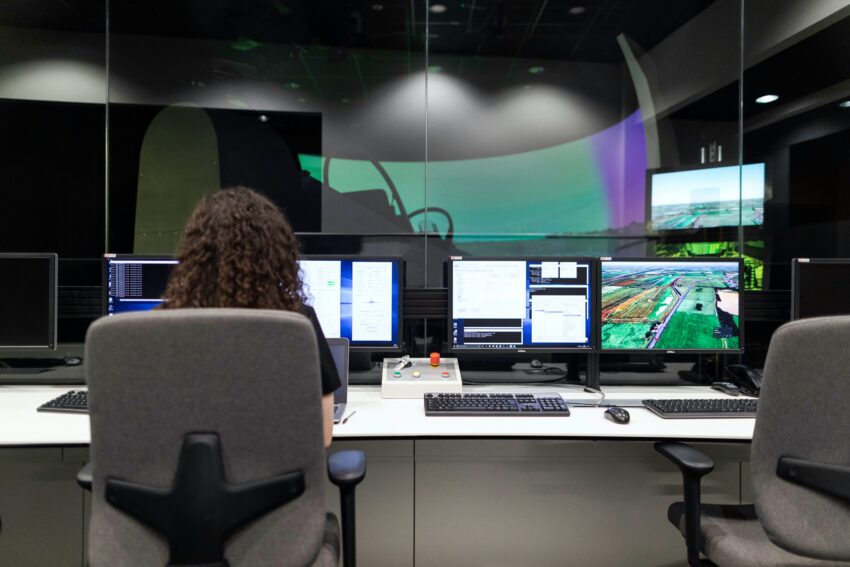In today’s business, operations management needs to be high speed, precise and adaptive. This is especially required for large corporations, where processes can be highly varied and complex. In order to make all these operations effective, the majority of businesses use ERP Software (Enterprise Resource Planning) – a software that integrates all business processes into a single system and helps in managing them in real time.
ERP solutions for an Entry Level Software Engineer are now an integral part of the business in most industries such as manufacturing, retail, logistics and finance. Having such a system implemented allows one to integrate all key functions – from supply chains and inventory control to financial accounting and HR. ERP systems allow companies to better work with data, minimize errors and make prompt decisions.
Celadonsoft: “But installing an ERP Software system is not just a question of installing software and expecting overnight benefits. It is a painstaking and time-consuming process involving huge investment, teamwork and accuracy.” In this article from Celadonsoft we will explain in detail how ERP systems make business processes smooth, what benefits they offer to businesses and also what problems can be encountered while implementing it.

Benefits of ERP Systems for Business
Enterprise Resource Planning (ERP) systems are a key driver for the modernization of business processes, allowing organizations to centralize handling data and improve their communications between different departments. Implementation of ERP facilitates efficient process optimization with reduced operating costs and increased business efficiency as a whole. Consider some of the main explained advantages that ERP systems offer to businesses:
Centralized Data Handling
Maybe the best advantage of ERP systems is that different business operations can be integrated onto one platform. All the information – from accounting and financial to warehouse and manufacturing – can be compiled and controlled in one place. Not only is this more timely and accurate information, but it eliminates the multiple stand-alone systems, reducing the likelihood of error and simplifying control over business processes.
Efficiency Improvement
ERP Software system helps to automate most routine activities such as billing, order taking and stock keeping. Automating these activities saves time to accomplish things, while reducing errors occasioned by human intervention. This translates into tremendous business efficiency in overall terms. Businesses are capable of responding to streamlining customer queries, hence improving customer service levels as well as customer satisfaction.
Improving Decision-Making
Next-generation ERP systems have evolved with advanced analytical capabilities that provide the management of the company access to real-time data. It facilitates faster and more informed decision-making based on accurate and most recent data. ERP’s built-in reporting mechanisms provide detailed reports that assist in the financial analyzing of the company, identifying opportunities for improvement and making better-informed strategic decisions.
Cutting Operating Expenses
Business process simplification with the use of the ERP system helps in reducing wasteful costs. For example, storage and transport costs can be reduced by optimizing inventory and logistics management. Furthermore, process automation reduces the amount of labor that has to be manually performed, thereby reducing labor cost and increasing the overall business economy.
Supply Chain and Inventory Management
Inventory management and supply chain management is perhaps the most significant role played by ERP systems. Because of real time tracking of goods and materials, organizations can avoid overstocking or understocking, something that goes a long way in influencing performance directly. Supply chain integration with vendors and real time tracking of deliveries allow companies to react quickly to demand fluctuations and order optimal purchases.
Primary ERP Systems Issues
ERP Software system installation is not a solely technological process. It’s a quite challenging, multi-way process affecting almost all departments of an enterprise. Even considering all the advantages, companies fail to find some of many issues migrating into these systems. Consider primary ones:
Too Costly and Complex Installation
One of the most significant roadblocks to implementation of an ERP system is that it is too expensive. That not only incorporates the cost of the system but also the price of setting up, training employees and possible interfaces with other systems. Implementation of ERP typically requires a huge expense, which would be difficult for small and medium businesses. The integration process would be hampered, too, increasing the implementation cost.
Resistance to Organizational Change
For the introduction of new technologies, the biggest challenge may be the reluctance to change on the part of employees. People are used to working and programs in traditional ways and are fearful of and resent any change. This can slow down the process of introduction since the employees have to be convinced of the benefits of the new system and need to adapt to the new way of working.
Technical Problems and Configuration Requirement
ERP solutions typically require complex configuration and integration with other firm systems. Occasionally, the system needs to be altered to meet specific business requirements. This is time-consuming for the IT department and external consultants. Errors here can lead to failures or even data loss, so correct configuration is an important step.
Issues in Staff Training
The system, regardless of how strong and beneficial it may be, will be of no use if not used appropriately. ERP implementation requires staff training, which demands time and effort. Most often, it means that more staff has to be trained, which leads to a slowdown of day-to-day activities. The need to train different levels of users, from managers to technical specialists, requires careful preparation of training materials and programs.
System Configuration and Personalization Challenges
Every business is unique, and an ERP system that may be appropriate for one company will not necessarily fit the other. It requires sound knowledge of company procedures and ERP expertise to make the system tailored to your company needs. While many systems come with pre-available solutions, in reality it will involve significant enhancement to ensure that the system adequately covers all in-house processes. The inflexibility of environments may restrict the options for applying the system, particularly in the long run.

How to Choose the Right ERP Solution for Your Business?
Choosing the most suitable ERP solution for your business is a make-or-break decision which requires careful analysis and consideration of different factors. Each business has some unique requirements, and the ERP system should cater to those needs with scalability and long-term assistance. Following are some most significant things to take into consideration while choosing a solution:
Business Needs Assessment
Before you choose an ERP system, you need to do a proper analysis of your existing processes in the company. What do you want to automate? What are the most resource-intensive tasks that need to be optimized? Having this information will enable you to choose a system that fits the idiosyncrasies of your business. Before you even start looking for the solution, determine also which functions of the system are the most important: accounting, inventory, HR management or something else.
Functionality and Flexibility
Never compromise on the basic functionalities of a standard ERP system. You must choose a system that can be customized to suit your business requirements and can scale up if the business grows. For example, if you are expanding your business, make sure that the solution you choose will support the increase in data volume and new processes without any impact on performance.
Budget and Support
The cost of an ERP system implementation varies depending on complexity, size and functionality. It should be remembered not only the solution initial expense, but support expense for the training of people, as well as potential future updates. Attempt to predict what is included in the cost of the license and what may be additional spending when running. It is also necessary to take note of technical support response time and availability to questions. The system with efficient and competent support will avoid extended downtimes and effectively solve problems.
Reviews and Market Research
Before you make the final decision, conduct market research. Read reviews of other businesses that have previously implemented ERP system. This will provide you with an understanding of the real experience of using the system, its pros and cons, and how it fits your business needs. Ask other experts or search for thematic forums where they discuss top solutions in the market.
Conclusion
Implementing an ERP system is a complex but extremely valuable process that will significantly contribute to your business. The right solution will automate processes, improve productivity, reduce operating costs and speed up decision-making. But choosing an ERP system requires careful planning and understanding of all business needs, and assessing the features, versatility, cost and support offered by various solutions.
Also, keep in mind that ERP implementation is not a one-time process. You will need some time to train your employees, implement the system and optimize its long-term effectiveness. So, an ERP system is neither a technological step nor a magic wand, but a strategic tool that can make your business sparkle in the long term.
